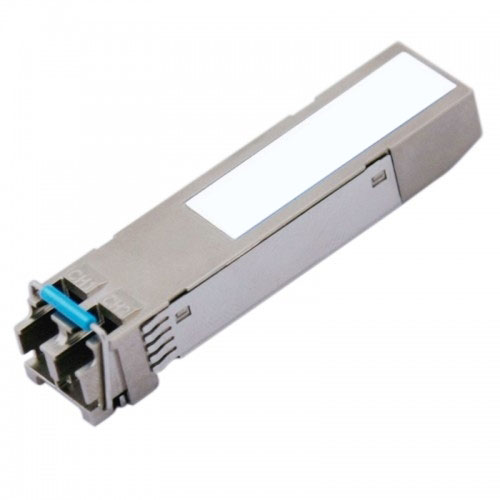- Related articles
- All Cisco XENPAK-10GB-ZR's information (List price, Specs, Datasheet PDF, Compatibility ma
- The Questions about the Cisco 10GBASE X2 Module & SFP Compatibility
- Optical Transceivers for Cisco WS-C6504-E-WISM Switch
- All Cisco ONS-GC-GE-LX's information (List price, Specs, Datasheet PDF, Compatibility matr
- 10GBASE-T or SFP Plus
- All Cisco DWDM-XFP-55.75's information (List price, Specs, Datasheet PDF, Compatibility ma
- The difference between XENPAK and SFP+
- What Is GYFTA Fiber Optic Cable?
- Cisco GLC T SFP Transceiver
- Optical Transceivers for Cisco N3K-C3172TQ-32T Switch

Definition:
QSFP is short for quad (4-channel) small form-factor pluggable. It is a compact, hot-pluggable transceiver also used for data communications applications. QSFP+ evolved as the standard to support 10Gb/s data rates per SFF-8436. Compared with QSFP+, QSFP products support Quarter Small Form-factor Pluggable with the different data rate so that there is no change in the product solution. Nowadays, QSFP+ gradually replaces QSFP and is widely used by people as it can provide higher bandwidth.
Compact small form-factor pluggable CSFP transceiver and a compact small form-factor CSFF transceiver supports network systems, especially those deploying single-fiber bidirectional transceivers in high density applications. The CSFP MSA defines a transceiver mechanical form-factor with latching mechanism and a host board, SFP-like, electrical edge connector and cage. The CSFF MSA also defines a transceiver mechanical form-factor. The dual-channel CSFP has the same mechanical dimensions as the industry-standard SFP transceiver and is compatible with the standard SFP cage. The single-channel CSFP and CSFF are half the size of the industry-standard SFP and SFF packages.
Difference between QSFP+ and CSFP
QSFP+
- QSFP+ MSA, SFF-8436 compatible
- Four independently addressable transmit and receive channels
- Highly compact: savings of 60% on edge and board usage compared to four comparable SFP+ modules
- Electrically hot-pluggable
- XFP-like latch mechanism for ease-of-insertion
- Digital Diagnostics Monitoring Interface. allows customer management and monitoring of key modules parameters, analogous to SFP+
- Optical connectivity via industry standard MPO/MTP terminated fiber ribbon
CSFP
- Support up to 1.25Gbps Data Links
- Single 3.3V Power supply and TTL Logic Interface
- 2XBi-directional transceivers in 1 Compact SFP transceiver package
- Class 1 FDA and IEC60825-1 Laser Safety Compliant
- Operating Case Temperature Standard: 0~+70C and Industrial -40~+85C
- Compliant with CSFP MSA Option 2 or Option 1
- Compliant with Digital Diagnostic Monitor Interface SFF-8472
Difference between SFP and XFP:
SFP transceivers are expected to perform at data speeds of up to five gigabits per second (5 Gbps), and possibly higher. Because SFP modules can be easily interchanged, electro-optical or fiber optic networks can be upgraded and maintained more conveniently than has been the case with traditional soldered-in modules. Rather than replacing an entire circuit board containing several soldered-in modules, a single module can be removed and replaced for repair or upgrading. This can result in a substantial cost savings, both in maintenance and in upgrading efforts.
XFP modules are hot-swappable and protocol-independent. They typically operate at near-infrared wavelengths (colors) of 850 nm, 1310 nm or 1550 nm. Principal applications include 10 Gigabit Ethernet, 10 Gbit/s Fibre Channel, synchronous optical networking (SONET) at OC-192 rates, synchronous optical networking STM-64, 10 Gbit/s Optical Transport Network (OTN) OTU-2, and parallel optics links. They can operate over a single wavelength or use dense wavelength-division multiplexing techniques. They include digital diagnostics that provide management that were added to the SFF-8472 standard. XFP modules use an LC fiber connector type to achieve higher density.
Conclusion:
QSFP+ is an evolution of QSFP to support four 10 Gbit/sec channels carrying 10 Gigabit Ethernet, 10GFC FiberChannel, or QDR InfiniBand. The 4 channels can also be combined into a single 40 Gigabit Ethernet link. The CSFP design is modular to enable configurations of integrated 2ch modules. The CSFP transceiver consists of 2-channel Bi-directional transceiver unit with five sections: the LD driver, the limiting amplifier, the digital diagnostic monitor, the 1310nm DFB laser and the 1490nm PIN photo-detector. The optical output can be disabled by a TTL logic high-level input of Tx Disable, and the system also can disable the module via I2C.







































































